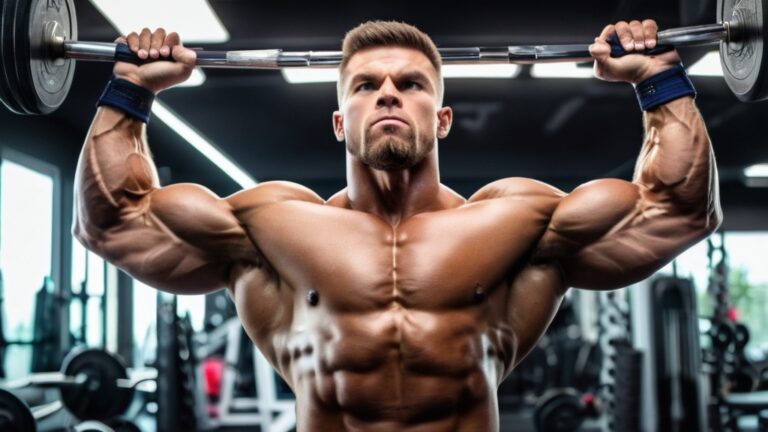As men enter their 50s, maintaining proper form and joint health becomes crucial. Aging brings about natural changes in the body, including decreased flexibility and strength. These changes can lead to poor posture and increased risk of injury during physical activities.
Good form not only enhances performance but also protects against injuries. Proper alignment during exercises ensures that the body distributes stress evenly across joints. This balance helps maintain joint integrity and overall mobility, which is essential for an active lifestyle.
Common Form and Joint Issues for Men Over 50
Men over 50 often experience specific form and joint issues. Common problems include stiffness, reduced range of motion, and chronic pain. These issues can stem from years of wear and tear on the body, leading to conditions like arthritis.
Additionally, poor posture can exacerbate these problems. Many men develop habits that lead to misalignment, especially if they sit for long periods. Recognizing these issues early can help in implementing effective strategies for improvement.
Incorporating Proper Warm-Up and Mobility Exercises

A proper warm-up is essential for preparing the body for physical activity. It increases blood flow to muscles and enhances flexibility. Simple mobility exercises can significantly improve joint function and reduce the risk of injury.
Incorporating dynamic stretches into your routine can enhance mobility. Movements like arm circles, leg swings, and torso twists help loosen tight muscles. A well-structured warm-up sets the stage for a successful workout.
Utilizing Corrective Exercises to Improve Form and Joint Function
Corrective exercises play a vital role in improving form and joint function. These exercises target specific weaknesses or imbalances in the body. By focusing on these areas, men can enhance their overall movement patterns.
For instance, exercises like glute bridges or wall angels can strengthen weak muscles. Strengthening these areas helps correct postural issues and improves stability. Consistent practice of corrective exercises leads to better form during regular workouts.
The Role of Strength Training in Form Correction for Men Over 50
Strength training is crucial for men over 50 looking to maintain proper form. It builds muscle mass, which naturally declines with age. Increased muscle strength supports joints and improves overall stability.
Incorporating compound movements like squats and deadlifts can enhance functional strength. These exercises engage multiple muscle groups, promoting better coordination. As strength improves, so does the ability to maintain proper form during various activities.
Addressing Joint Pain and Mobility Restrictions

Joint pain and mobility restrictions can significantly impact daily life. Many men experience discomfort in their knees, hips, or shoulders as they age. Addressing these issues promptly is essential for maintaining an active lifestyle.
Gentle stretching and low-impact activities can help alleviate pain. Activities like swimming or cycling provide cardiovascular benefits without stressing the joints. Finding the right balance between activity and rest is key to managing discomfort.
Seeking Professional Help: Physical Therapy and Chiropractic Care
Professional help can be invaluable for addressing form and joint issues. Physical therapists assess individual needs and create tailored exercise programs. They focus on improving strength, flexibility, and overall function.
Chiropractors also play a crucial role in joint health. They use manual adjustments to improve alignment and relieve pain. Seeking professional guidance ensures a comprehensive approach to maintaining form and joint health.
Making Necessary Modifications to Your Workout Routine
As men age, modifying workout routines becomes necessary. High-impact exercises may no longer be suitable for everyone. Instead, consider low-impact alternatives that still provide effective workouts.
Allowing time for recovery helps prevent overuse injuries. Adjusting intensity levels ensures that workouts remain challenging yet safe.
The Importance of Recovery and Rest for Joint Health
Recovery is just as important as exercise itself. Adequate rest allows muscles and joints to heal after workouts. Ignoring recovery can lead to chronic pain and long-term damage.
Incorporating rest days into your routine promotes overall joint health. Gentle activities like yoga or walking can aid recovery without putting stress on the joints.
Nutrition and Supplementation for Joint Support
Nutrition plays a significant role in joint health as well. A balanced diet rich in anti-inflammatory foods can support joint function. Foods like fatty fish, nuts, and leafy greens provide essential nutrients.
Supplements may also offer additional support for joint health. Glucosamine and chondroitin are popular choices among those with joint issues. Always consult a healthcare professional before starting any new supplement regimen.
Long-Term Strategies for Maintaining Form and Joint Health in Your 50s
Maintaining form and joint health requires a long-term commitment. Establishing a consistent exercise routine is essential for ongoing improvement. Focus on a mix of strength training, flexibility exercises, and cardiovascular activities.
Regular check-ins with healthcare professionals can help monitor progress. They can provide guidance on necessary adjustments to your routine as you age. Staying proactive about your health ensures a vibrant, active lifestyle in your 50s and beyond.



